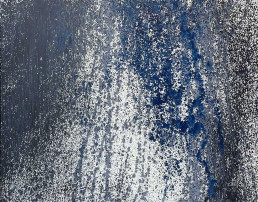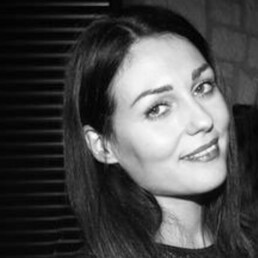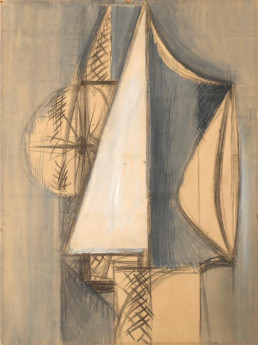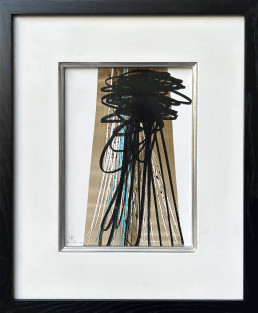Hans Hartung : Exploring his Lyrical Abstraction
Hans Hartung, born in Germany in 1904, is a central figure in 20th-century abstract art. His work, marked by a relentless search for new forms of expression, bears witness to his creative genius and lasting influence on modern art. Through his works, Hartung explored a variety of techniques and styles, constantly evolving and pushing back the boundaries of abstraction. This article explores three key works by Hartung, produced in 1939, 1976 and 1988, illustrating his artistic journey and the evolution of his technique.
A Work of 1939: Geometric Inspiration
In 1939, the year of his marriage to Roberta Gonzalez, Hans Hartung created a landmark body of work that testifies to his brief exploration of geometrically inspired abstraction. This period of his work is characterized by a move away from his usual abstract representations, concentrating instead on shapes, lines and structures.
This 1939 piece is emblematic of this experimental phase. It presents a balanced composition of geometric shapes and lines drawn with great precision and delicacy, reflecting Hartung’s meticulous search for a new aesthetic. Shades of gray and beige dominate the palette, creating a sober, elegant ambience that emphasizes the purity of form.
The work also shows the influence of modern European art, notably Cubism and Constructivism, movements that had a profound impact on Hartung’s quest for artistic innovation. Although it is not certain whether this piece was a wedding gift, it represents an intimate link between his personal life and his artistic evolution.
To fully appreciate this work, one must consider not only its visual beauty but also its historical context. It marks a milestone in Hartung‘s career, characterized by a constant quest for innovation and artistic expression.
Abstraction in the 70s: a period of change
In the 1970s, Hans Hartung found himself in a transitional period marked by the transition from the scratch techniques of the 1960s. This period is characterized by a style of abstraction in which he uses energetic, spontaneous brushstrokes to express a new intensity and freedom compared to his early geometric explorations.
This 1976 work, characterized by swirling black lines and bursts of vibrant color, is a good illustration of this period. Here, Hartung adopts a gestural approach, where each brushstroke seems a direct extension of his state of mind. The bright blue running through the work adds a depth and vitality that contrasts magnificently with the darker tones.
Blue is not chosen at random; it demonstrates Hartung‘s ability to use color to evoke different atmospheres. A symbol of calm and serenity, blue blends with the turbulence of black lines, creating a captivating visual tension.
This work also illustrates Hart’s move away from the scratching technique typical of the 60s, and a new approach to abstraction.
Hartung‘s lyrical abstraction reflects a quest for freedom and pure expression. By freeing himself from formal constraints, he succeeds in conveying feelings and sensations with a rare immediacy. His 1976 work embodies this quest for direct, instinctive artistic communication.
A Work from 1988: Hartung's Ultimate Achievement in Abstraction
The 1980s marked the last period of his career, the ultimate culmination of his abstraction, which was very different from his earlier paintings. From 1986 onwards, Hartung was very weak and could no longer manipulate the instruments he usually used to paint. He then turned to innovative techniques, working on the projection of paint streams using zip-lines, airless spray guns and garden sulfate machines.
This 1988 work, created just after the death of his wife Anna-Eva Bergman in 1987 and the year before his own death, is typical of his work during this period. Hartung emancipated himself from traditional forms, articulating his work around two recurring vocabularies: interlacing and zone-by-zone color. He creates a background with a gun that sprays color in a nebulous manner, then draws over it with a garden sprayer. The colors, dominated by shades of blue and white, show a technical mastery and increased sophistication in his use of materials. The contrast between bursts of blue and white textures creates a rich visual composition, illustrating the evolution of his lyrical abstraction. Subtle fluorescent yellow speckling also appears in the work, adding a touch of luminosity and depth, and demonstrating once again Hartung‘s ability to exploit every nuance to enrich his compositions.
Hartung approaches the new tools with the same curiosity and rigor he had for the more traditional techniques. He experimented, moving from discovery to mastery, physically memorizing the possibilities offered by these new tools.
The 1988 work reflects this technical exploration, with the rapid, controlled execution that characterizes his style. Speed of execution is an essential feature of this work. The tools used demand a double mastery: that of gesture and that of time. Hartung, who has always experimented with the temporal dimension of his techniques, knows perfectly well how to play with these elements to create dynamic, moving compositions.

Hans Hartung left an indelible mark on abstract art, constantly exploring new forms of expression. His works from 1939, 1976 and 1988 bear witness to his stylistic evolution and his capacity for constant innovation. Through his various periods, Hartung always sought to capture the essence of emotion and movement, leaving a rich and varied artistic legacy.

Céline FERNANDEZ
With 15 years' experience in marketing and communications, Céline has worked for major companies such as Public Système, Groupe Galerie Lafayette and several communications agencies. For over 5 years, she has been managing the gallery's communications through the website, social networks and traditional media.



